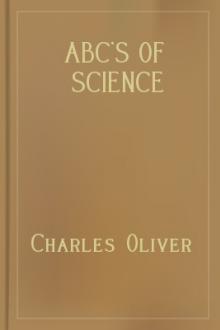author - "Charles Oliver"

unt of vapor for animals and vegetables to flourish.
5. Venus has the brightest lustre of our planets which is caused from enormous amount of vapor. It is carried over its orbit at about 67,000,000 miles from the sun, which requires 224 7/10 days to complete its course. Rotates once every 23 hours and 21 minutes. Diameter, 7,700 miles.
6. The earth is carried over its orbit; main distance being 93,000,000 miles from the sun, which requires one year to complete its course, which is 680,000,000 miles:
MILES Earth's diameter 8,000 Greater or equatorial 7,925 Less or polar 7,899 Difference on comparison 26
The earth rotates once every 23 hours, 56 minutes, and 4 seconds; has one satellite, which is carried over its orbit at a distance of 238,850 miles from the earth. Its diameter is 2,160 miles. The moon completes its orbit in 29 days, 12 hours, 44 minutes, and 2 seconds. Its currents touch the earth and cause the tide; also affects some plants of the phenomena verita; these plants are

unt of vapor for animals and vegetables to flourish.
5. Venus has the brightest lustre of our planets which is caused from enormous amount of vapor. It is carried over its orbit at about 67,000,000 miles from the sun, which requires 224 7/10 days to complete its course. Rotates once every 23 hours and 21 minutes. Diameter, 7,700 miles.
6. The earth is carried over its orbit; main distance being 93,000,000 miles from the sun, which requires one year to complete its course, which is 680,000,000 miles:
MILES Earth's diameter 8,000 Greater or equatorial 7,925 Less or polar 7,899 Difference on comparison 26
The earth rotates once every 23 hours, 56 minutes, and 4 seconds; has one satellite, which is carried over its orbit at a distance of 238,850 miles from the earth. Its diameter is 2,160 miles. The moon completes its orbit in 29 days, 12 hours, 44 minutes, and 2 seconds. Its currents touch the earth and cause the tide; also affects some plants of the phenomena verita; these plants are